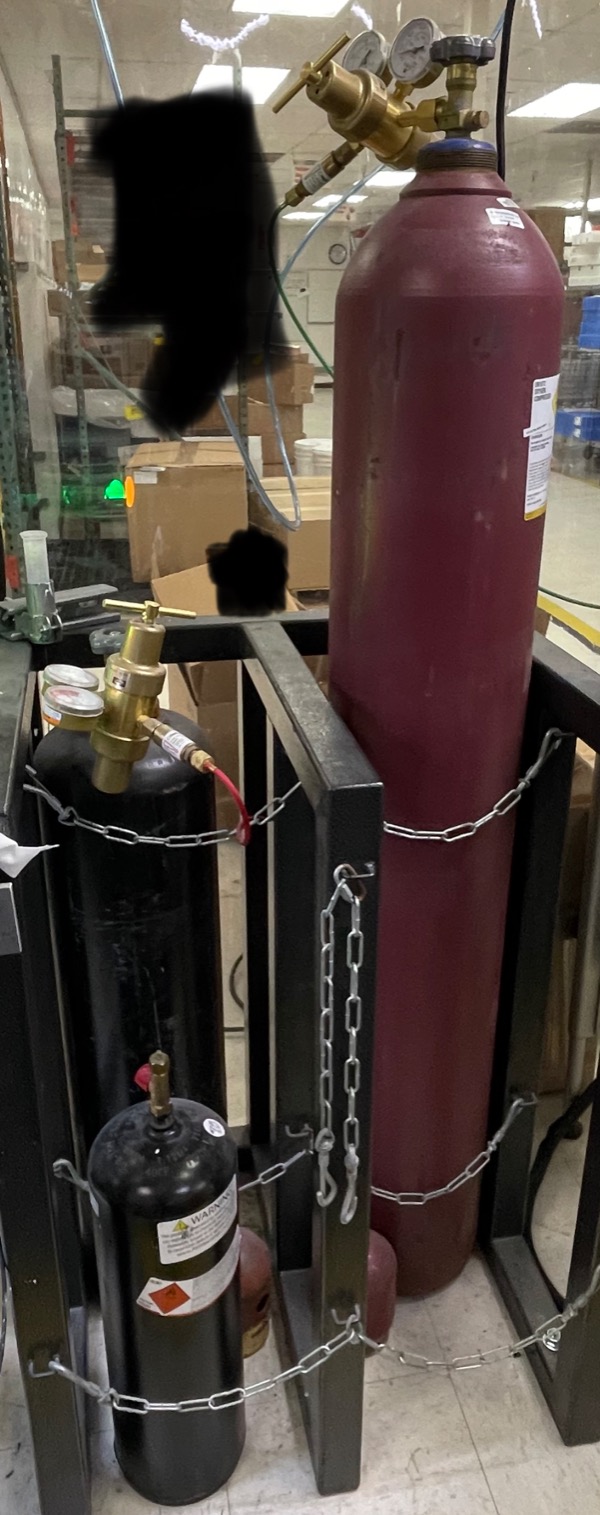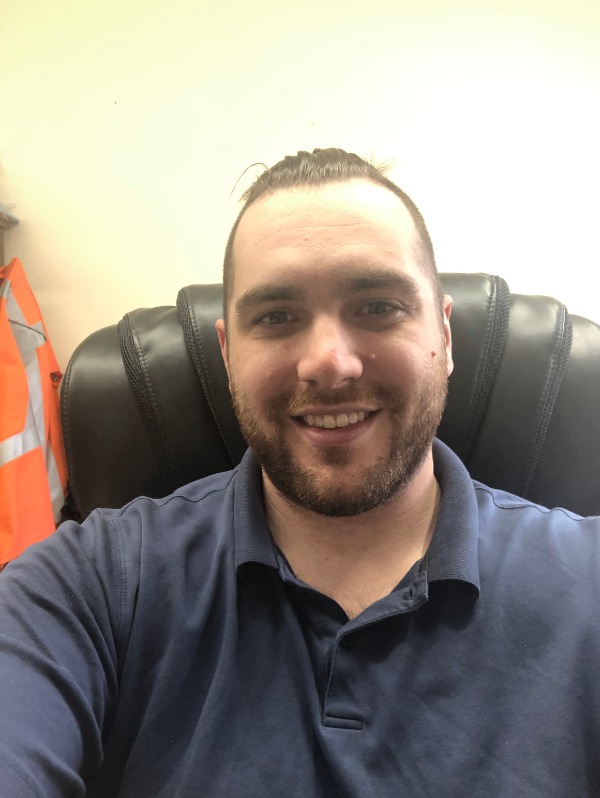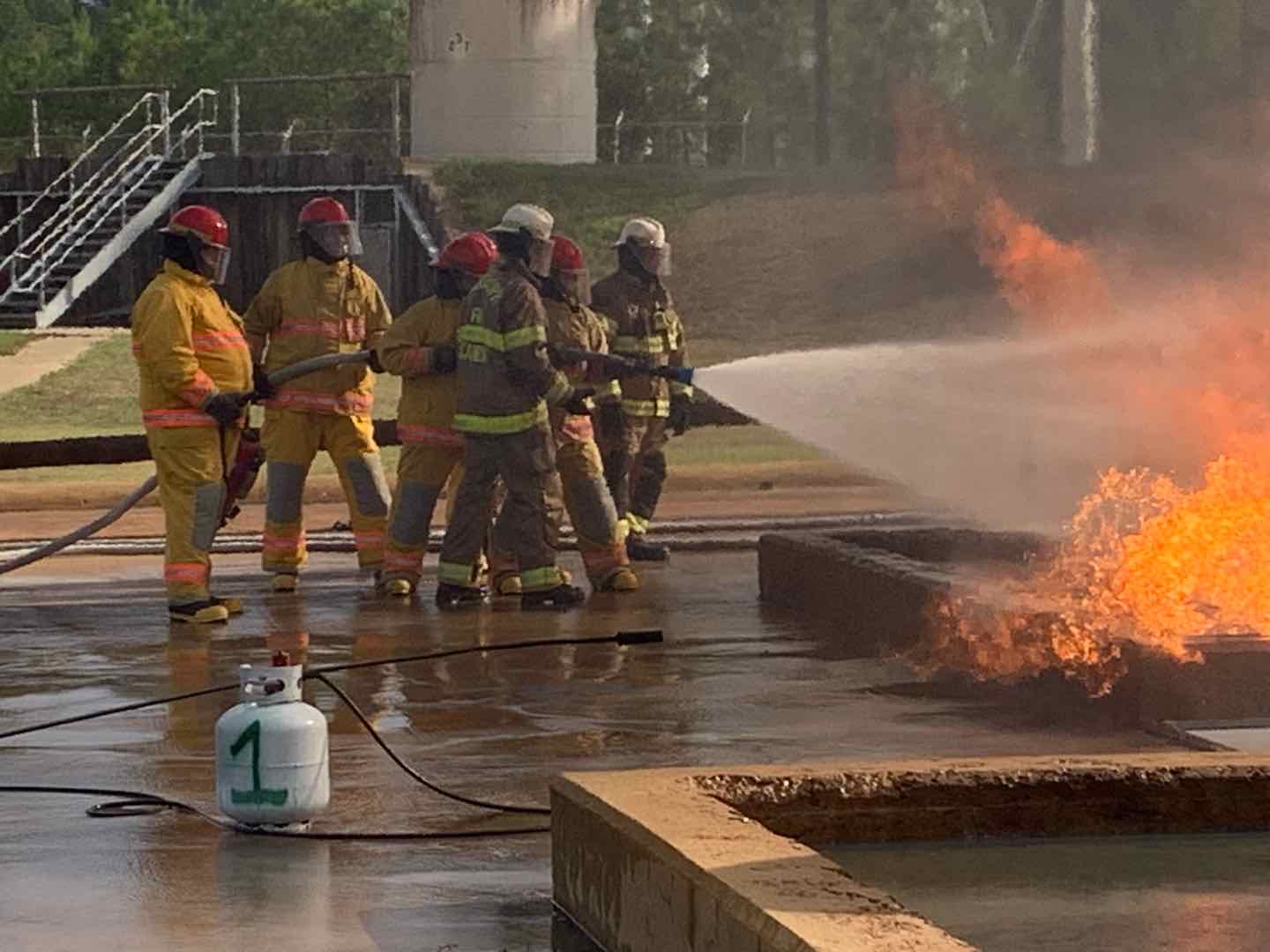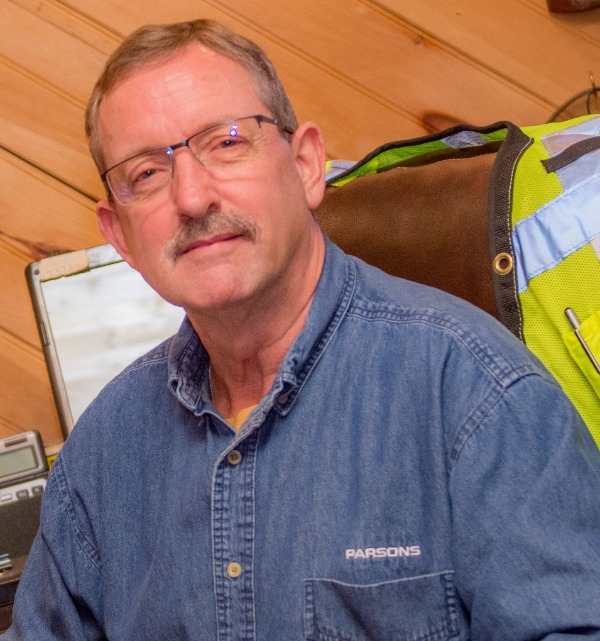Clearing up the confusion related to storage vs. use of oxygen and acetylene cylinders
Hi everyone, please view the photo and let’s start discussing how you tackle this on your job site.
Start with what you see wrong. General industry in California. Oxygen and Acetylene cylinders in use to conduct welding. Do you believe a protective barrier should be placed between the two types of gases? What else may you have to question here?

Comments (11)

Hi there, well according to CalOSHA, oxygen cylinders in storage shall be separated from fuel gas cylinders or combustible materials (especially oil or grease) a minimum distance of 20 feet or by a non-combustible barrier at least 5 feet high, or a minimum of 18 inches (46 centimeters) above the tallest cylinder and having a fire-resistance rating of at least one hour. So yes, there must be a protective barrier or sufficient distance from each other. There are probably other issues but this is definitely the first that comes to mind.

Not super familiar with the California regs, but for sure that smaller bottle should have a better collar - not a whole lot that would prevent that from falling over.


Not familiar with Cali.. IMO those bottles are in USE and not in storage, therefore the storage rules do not apply right now.


Smaller cylinder looks like a flammable and it not being used. Chains holding the smaller cylinder not adequate.


The taller cylinders are in use and appropriately secured. The smaller cylinder, definitely not in use and not stored or secured correctly.


I agree with Antonio on the separation but the bottles are in use. We had oxygen/acetylene carts all throughout our shop. As long as they were chained as to prevent them from tipping out of the cart, they are turned off each night (and hoses bled down), OSHA was okay with it. However, the chain on the smaller bottle is not going to prevent it from tipping over.

